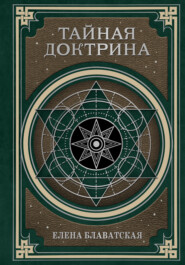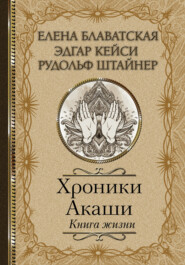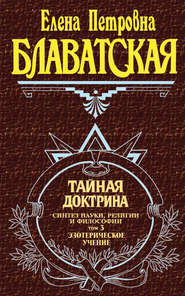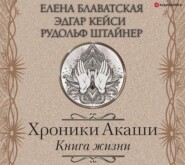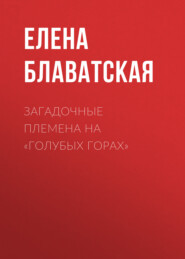По всем вопросам обращайтесь на: info@litportal.ru
(©) 2003-2024.
✖
From the Caves and Jungles of Hindostan
Настройки чтения
Размер шрифта
Высота строк
Поля
"We have paid only two rupees for a secret which proved as strong in the colonel's hands as in the hands of the buni. Is it then so difficult to procure a store of these stones?" Our friend laughed.
"In a few days," said he, "the talisman will lose all its healing powers in your inexperienced hands. This is the reason why he let it go at such a low price, which he is, probably, at this moment sacrificing before the altar of his deity. I guarantee you a week's activity for your purchase, but after that time it will only be fit to be thrown out of the window."
We soon learned how true were these words. On the following day we came across a little girl, bitten by a green scorpion. She seemed to be in the last convulsions. No sooner had we applied the stone than the child seemed relieved, and, in an hour, she was gaily playing about, whereas, even in the case of the sting of a common black scorpion, the patient suffers for two weeks. But when, about ten days later, we tried the experiment of the stone upon a poor coolie, just bitten by a cobra, it would not even stick to the wound, and the poor wretch shortly expired. I do not take upon myself to offer, either a defence, or an explanation of the virtues of the "stone." I simply state the facts and leave the future career of the story to its own fate. The sceptics may deal with it as they will. Yet I can easily find people in India who will bear witness to my accuracy.
In this connection I was told a funny story. When Dr. (now Sir J.) Fayrer, who lately published his Thanatophidia, a book on the venomous snakes of India, a work well known throughout Europe, he categorically stated in it his disbelief in the wondrous snake-charmers of India. However, about a fortnight or so after the book appeared amongst the Anglo-Indians, a cobra bit his own cook. A buni, who happened to pass by, readily offered to save the man's life. It stands to reason that the celebrated naturalist could not accept such an offer. Nevertheless, Major Kelly and other officers urged him to permit the experiment. Declaring that in spite of all, in less than an hour his cook would be no more, he gave his consent. But it happened that in less than an hour the cook was quietly preparing dinner in the kitchen, and, it is added, Dr. Fayrer seriously thought of throwing his book into the fire.
The day grew dreadfully hot. We felt the heat of the rocks in spite of our thick-soled shoes. Besides, the general curiosity aroused by our presence, and the unceremonious persecutions of the crowd, were becoming tiring. We resolved to "go home," that is to say, to return to the cool cave, six hundred paces from the temple, where we were to spend the evening and to sleep. We would wait no longer for our Hindu companions, who had gone to see the fair, and so we started by ourselves.–
On approaching the entrance of the temple we were struck by the appearance of a young man, who stood apart from the crowd and was of an ideal beauty. He was a member of the Sadhu sect, a "candidate for Saintship," to use the expression of one of our party.
The Sadhus differ greatly from every other sect. They never appear unclothed, do not cover themselves with damp ashes, wear no painted signs on their faces, or foreheads, and do not worship idols. Belonging to the Adwaiti section of the Vedantic school, they believe only in Parabrahm (the great spirit). The young man looked quite decent in his light yellow costume, a kind of nightgown without sleeves. He had long hair, and his head was uncovered. His elbow rested on the back of a cow, which was itself well calculated to attract attention, for, in addition to her four perfectly shaped legs, she had a fifth growing out of her hump. This wonderful freak of nature used its fifth leg as if it were a hand and arm, hunting and killing tiresome flies, and scratching its head with the hoof. At first we thought it was a trick to attract attention, and even felt offended with the animal, as well as with its handsome owner, but, coming nearer, we saw that it was no trick, but an actual sport of mischievous Nature. From the young man we learned that the cow had been presented to him by the Maharaja Holkar, and that her milk had been his only food during the last two years.
Sadhus are aspirants to the Raj Yoga, and, as I have said above, usually belong to the school of the Vedanta. That is to say, they are disciples of initiates who have entirely resigned the life of the world, and lead a life of monastic chastity. Between the Sadhus and the Shivaite bunis there exists a mortal enmity, which manifests itself by a silent contempt on the side of the Sadhus, and on that of the bunis by constant attempts to sweep their rivals off the face of the earth. This antipathy is as marked as that between light and darkness, and reminds one of the dualism of the Ahura-Mazda and Ahriman of the Zoroastrians. Masses of people look up to the first as to Magi, sons of the sun and of the Divine Principle, while the latter are dreaded as dangerous sorcerers. Having heard most wonderful accounts of the former, we were burning with anxiety to see some of the "miracles" ascribed to them by some even among the Englishmen. We eagerly invited the Sadhu to visit our vihara during the evening. But the handsome ascetic sternly refused, for the reason that we were staying within the temple of the idol-worshippers, the very air of which would prove antagonistic to him. We offered him money, but he would not touch it, and so we parted.
A path, or rather a ledge cut along the perpendicular face of a rocky mass 200 feet high, led from the chief temple to our vihara. A man needs good eyes, sure feet, and a very strong head to avoid sliding down the precipice at the first false step. Any help would be quite out of the question, for, the ledge being only two feet wide, no one could walk side by side with another. We had to walk one by one, appealing for aid only to the whole of our personal courage. But the courage of many of us was gone on an unlimited furlough. The position of our American colonel was the worst, for he was very stout and short-sighted, which defects, taken together, caused him frequent vertigos. To keep up our spirits we indulged in a choral performance of the duet from Norma, "Moriam' insieme," holding each other's hands the while, to ensure our being spared by death or dying all four in company. But the colonel did not fail to frighten us nearly out of our lives. We were already half way up to the cave when he made a false step, staggered, lost hold of my hand, and rolled over the edge. We three, having to clutch the bushes and stones, were quite unable to help him. A unanimous cry of horror escaped us, but died away as we perceived that he had succeeded in clinging to the trunk of a small tree, which grew on the slope a few steps below us. Fortunately, we knew that the colonel was good at athletics, and remarkably cool in danger. Still the moment was a critical one. The slender stem of the tree might give way at any moment. Our cries of distress were answered by the sudden appearance of the mysterious Sadhu with his cow.
They were quietly walking along about twenty feet below us, on such invisible projections of the rock that a child's foot could barely have found room to rest there, and they both traveled as calmly, and even carelessly, as if a comfortable causeway were beneath their feet, instead of a vertical rock. The Sadhu called out to the colonel to hold on, and to us to keep quiet. He patted the neck of his monstrous cow, and untied the rope by which he was leading her. Then, with both hands he turned her head in our direction, and clucking with his tongue, he cried "Chal!" (go). With a few wild goat-like bounds the animal reached our path, and stood before us motion-less. A for the Sadhu himself, his movements were as swift and as goat-like. In a moment he had reached the tree, tied the rope round the colonel's body, and put him on his legs again; then, rising higher, with one effort of his strong hand he hoisted him up to the path. Our colonel was with us once more, rather pale, and with the loss of his pince-nez, but not of his presence of mind.
An adventure that had threatened to become a tragedy ended in a farce.
"What is to be done now?" was our unanimous inquiry. "We cannot let you go alone any further."
"In a few moments it will be dark and we shall be lost," said Mr. Y–, the colonel's secretary.
And, indeed, the sun was dipping below the horizon, and every moment was precious. In the meanwhile, the Sadhu had fastened the rope round the cow's neck again and stood before us on the pathway, evidently not understanding a word of our conversation. His tall, slim figure seemed as if suspended in the air above the precipice. His long, black hair, floating in the breeze, alone showed that in him we beheld a living being and not a magnificent statue of bronze. Forgetting our recent danger and our present awkward situation, Miss X–, who was a born artist, exclaimed: "Look at the majesty of that pure profile; observe the pose of that man. How beautiful are his outlines seen against the golden and blue sky. One would say, a Greek Adonis, not a Hindu!" But the "Adonis" in question put a sudden stop to her ecstasy. He glanced at Miss X– with half-pitying, half-kindly, laughing eyes, and said with his ringing voice in Hindi—
"Bara-Sahib cannot go any further without the help of someone else's eyes. Sahib's eyes are his enemies. Let the Sahib ride on my cow. She cannot stumble."
"I! Ride on a cow, and a five-legged one at that? Never!" exclaimed the poor colonel, with such a helpless air, nevertheless, that we burst out laughing.
"It will be better for Sahib to sit on a cow than to lie on a chitta" (the pyre on which dead bodies are burned), remarked the Sadhu with modest seriousness. "Why call forth the hour which has not yet struck?"
The colonel saw that argument was perfectly useless, and we succeeded in persuading him to follow the Sadhu's advice, who carefully hoisted him on the cow's back, then, recommending him to hold on by the fifth leg, he led the way. We all followed to the best of our ability.
In a few minutes more we were on the verandah of our vihara, where we found our Hindu friends, who had arrived by another path. We eagerly related all our adventures, and then looked for the Sadhu, but, in the meanwhile, he had disappeared together with his cow.
"Do not look for him, he is gone by a road known only to himself," remarked Gulab-Sing carelessly. "He knows you are sincere in your gratitude, but he would not take your money. He is a Sadhu, not a buni," added he proudly.
We remembered that it was reported this proud friend of ours also belonged to the Sadhu sect. "Who can tell," whispered the colonel in my ear, "whether these reports are mere gossip, or the truth?"
Sadhu-Nanaka must not be confounded with Guru-Nanaka, a leader of the Sikhs. The former are Adwaitas, the latter monotheists. The Adwaitas believe only in an impersonal deity named Parabrahm.
In the chief hall of the vihara was a life-sized statue of Bhavani, the feminine aspect of Shiva. From the bosom of this devaki streams forth the pure cold water of a mountain spring, which falls into a reservoir at her feet. Around it lay heaps of sacrificial flowers, rice, betel leaves and incense. This hall was, in consequence, so damp that we preferred to spend the night on the verandah in the open air, hanging, as it were, between sky and earth, and lit from below by numerous fires kept burning all the night by Gulab-Sing's servants, to scare away wild beasts, and, from above, by the light of the full moon. A supper was arranged after the Eastern fashion, on carpets spread upon the floor, and with thick banana leaves for plates and dishes. The noiselessly gliding steps of the servants, more silent than ghosts, their white muslins and red turbans, the limitless depths of space, lost in waves of moonlight, before us, and behind, the dark vaults of ancient caves, dug out by unknown races, in unknown times, in honor of an unknown, prehistoric religion—all these, our surroundings, transported us into a strange world, and into distant epochs far different from our own.
We had before us representatives of five different peoples, five different types of costume, each quite unlike the others. All five are known to us in ethnography under the generic name of Hindus. Similarly eagles, condors, hawks, vultures, and owls are known to ornithology as "birds of prey," but the analogous differences are as great. Each of these five companions, a Rajput, a Bengali, a Madrasi, a Sinhalese and a Mahratti, is a descendant of a race, the origin of which European scientists have discussed for over half a century without coming to any agreement.
Rajputs are called Hindus and are said to belong to the Aryan race; but they call themselves Suryavansa, that is to say, descendants of Surya or the sun.
The Brahmans derive their origin from Indu, the moon, and are called Induvansa; Indu, Soma, or Chandra, meaning moon in Sanskrit. If the first Aryans, appearing in the prologue of universal history, are Brahmans, that is to say, the people who, according to Max Muller, having crossed the Himalayas conquered the country of the five rivers, then the Rajputs are no Aryans; and if they are Aryans they are not Brahmans, as all their genealogies and sacred books (Puranas) show that they are much older than the Brahmans; and, in this case, moreover, the Aryan tribes had an actual existence in other countries of our globe than the much renowned district of the Oxus, the cradle of the Germanic race, the ancestors of Aryans and Hindus, in the fancy of the scientist we have named and his German school.
The "moon" line begins with Pururavas (see the genealogical tree prepared by Colonel Tod from the MS. Puranas in the Oodeypore archives), that is to say, two thousand two hundred years before Christ, and much later than Ikshvaku, the patriarch of the Suryavansa. The fourth son of Pururavas, Rech, stands at the head of the line of the moon-race, and only in the fifteenth generation after him appears Harita, who founded the Kanshikagotra, the Brahman tribe.
The Rajputs hate the latter. They say the children of the sun and Rama have nothing in common with the children of the moon and Krishna. As for the Bengalis, according to their traditions and history, they are aborigines. The Madrasis and the Sinhalese are Dravidians. They have, in turn, been said to belong to the Semites, the Hamites, the Aryans, and, lastly, they have been given up to the will of God, with the conclusion drawn that the Sinhalese, at all events, must be Mongolians of Turanian origin. The Mahrattis are aborigines of the West of India, as the Bengalis are of, the East; but to what group of tribes belong these two nationalities no ethnographer can define, save perhaps a German. The traditions of the people themselves are generally denied, because they are not in harmony with foregone conclusions. The meaning of ancient manuscripts is disfigured, and, in fact, sacrificed to fiction, if only the latter proceeds from the mouth of some favorite oracle.
The ignorant masses are often blamed and found to be guilty of superstition for creating idols in the spiritual world. Is not, then, the educated man, the man who craves after knowledge, who is enlightened, still more inconsistent than these masses, when he deals with his favorite authorities? Are not half a dozen laurel-crowned heads allowed by him to do whatever they like with facts, to draw their own conclusions, according to their own liking, and does he not stone every one who would dare to rise against the decisions of these quasi-infallible specialists, and brand him as an ignorant fool?
Let us remember the case in point of Louis Jacolliot, who spent twenty years in India, who actually knew the language and the country to perfection, and who, nevertheless, was rolled in the mud by Max Muller, whose foot never touched Indian soil.
The oldest peoples of Europe are mere babes com-pared with the tribes of Asia, and especially of India. And oh! how poor and insignificant are the genealogies of the oldest European families compared with those of some Rajputs. In the opinion of Colonel Tod, who for over twenty years studied these genealogies on the spot, they are the completest and most trustworthy of the records of the peoples of antiquity. They date from 1,000 to 2,200 years B.C., and their authenticity may often be proved by reference to Greek authors. After long and careful research and comparison with the text of the Puranas, and various monumental inscriptions, Colonel Tod came to the conclusion that in the Oodeypore archives (now hidden from public inspection), not to mention other sources, may be found a clue to the history of India in particular, and to universal ancient history in general. Colonel Tod advises the earnest seeker after this clue not to think, with some flippant archaeologists who are insufficiently acquainted with India, that the stories of Rama, the Mahabharata, Krishna, and the five brothers Pandu, are mere allegories. He affirms that he who seriously considers these legends will very soon become thoroughly convinced that all these so-called "fables" are founded on historical facts, by the actual existence of the descendants of the heroes, by tribes, ancient towns, and coins still extant; that to acquire the right to pronounce a final opinion one must read first the inscriptions on the Inda-Prestha pillars of Purag and Mevar, on the rocks of Junagur, in Bijoli, on Aravuli and on all the ancient Jaina temples scattered throughout India, where are to be found numerous inscriptions in a language utterly unknown, in comparison with which the hieroglyphs will seem a mere toy.
Yet, nevertheless, Professor Max Muller, who, as already mentioned, was never in India, sits as a judge and corrects chronological tables as is his wont, and Europe, taking his words for those of an oracle, endorses his decisions. Et c'est ainsi que s'ecrit l'histoire.
Talking of the venerable German Sanskritist's chronology, I cannot resist the desire to show, be it only to Russia, on what a fragile basis are founded his scientific discussions, and how little he is to be trusted when he pronounces upon the antiquity of this or that manuscript. These pages are of a superficial and descriptive nature, and, as such, make no pretense to profound learning, so that what follows may seem incongruous. But it must be remembered that in Russia, as elsewhere in Europe, people estimate the value of this philological light by the points of exclamation lavished upon him by his admiring followers, and that no one reads the Veda Bhashaya of Swami Dayanand. It may even be that I shall not be far from the truth in saying that the very existence of this work is ignored, which may perhaps be a fortunate fact for the reputation of Professor Max Muller. I shall be as brief as possible. When Professor Max Muller states, in his Sahitya-Grantha, that the Aryan tribe in India acquired the notion of God step by step and very slowly, he evidently wishes to prove that the Vedas are far from being as old as is supposed by some of his colleagues. Having presented, in due course, some more or less valuable evidence to prove the truth of this new theory, he ends with a fact which, in his opinion, is indisputable. He points to the word hiranya-garbha in the mantrams, which he translates by the word "gold," and adds that, as the part of the Vedas called chanda appeared 3,100 years ago, the part called mantrams could not have been written earlier than 2,900 years ago. Let me remind the reader that the Vedas are divided into two parts: chandas—slokas, verses, etc.; and mantrams—prayers and rhythmical hymns, which are, at the same time, incantations used in white magic. Professor Max Muller divides the mantram ("Agnihi Poorwebhihi," etc.) philologically and chronologically, and, finding in it the word hiranya-garbha, he denounces it as an anachronism. The ancients, he says, had no knowledge of gold, and, therefore, if gold is mentioned in this mantram it means that the mantram was composed at a comparatively modern epoch, and so on.
But here the illustrious Sanskritist is very much mistaken. Swami Dayanand and other pandits, who sometimes are far from being Dayanand's allies, maintain that Professor Max Muller has completely misunderstood the meaning of the term hiranya. Originally it did not mean, and, when united to the word garbha, even now does not mean, gold. So all the Professor's brilliant demonstrations are labor in vain. The word hiranya in this mantram must be translated "divine light"—mystically a symbol of knowledge; analogically the alchemists used the term "sublimated gold" for "light," and hoped to compose the objective metal out of its rays. The two words, hiranya-garbha, taken together, mean, literally, the "radiant bosom," and, when used in the Vedas, designate the first principle, in whose bosom, like gold in the bosom of the earth, rests the light of divine knowledge and truth, the essence of the soul liberated from the sins of the world. In the mantrams, as in the chandas, one must always look for a double meaning: (1) a metaphysical one, purely abstract, and (2) one as purely physical; for everything existing upon the earth is closely bound to the spiritual world, from which it proceeds and by which it is reabsorbed. For instance Indra, the god of thunder, Surya, the sun-god, Vayu, god of the wind, and Agni, god of fire, all four depending on this first divine principle, expand, according to the mantram from hiranya-garbha, the radiant bosom. In this case the gods are the personifications of the forces of Nature. But the initiated Adepts of India understand very clearly that the god Indra, for instance, is nothing more than a mere sound, born of the shock of electrical forces, or simply electricity itself. Surya is not the god of the sun, but simply the centre of fire in our system, the essence whence come fire, warmth, light, and so on; the very thing, namely, which no European scientist, steering an even course between Tyndall and Schropfer, has, as yet, defined. This concealed meaning has totally escaped Professor Max Muller's attention, and this is why, clinging to the dead letter, he never hesitates before cutting a Gordian knot. How then can he be permitted to pronounce upon the antiquity of the Vedas, when he is so far from the right understanding of the language of these ancient writings.
The above is a resume of Dayanand's argument, and to him the Sanskritists must apply for further particulars, which they will certainly find in his Rigvedadi Bhashya Bhoomika.
In the cave, every one slept soundly round the fire except myself. None of my companions seemed to mind in the least either the hum of the thousand voices of the fair, or the prolonged, far-away roar of the tigers rising from the valley, or even the loud prayers of the pilgrims who passed to and fro all night long, never fearing to cross the steep passage which, even by daylight, caused us such perplexity. They came in parties of twos and threes, and sometimes there appeared a lonely unescorted woman. They could not reach the large vihara, because we occupied the verandah at its entrance, and so, after grumbling a little, they entered a small lateral cave something like a chapel, containing a statue of Devaki-Mata, above a tank full of water. Each pilgrim prostrated himself for a time, then placed his offering at the feet of the goddess and bathed in the "holy waters of purification," or, at the least, sprinkled some water over his forehead, cheeks, and breast. Lastly, retreating backwards, he knelt again at the door and disappeared in the darkness with a final invocation: "Mata, maha mata!"—Mother, O great mother!
Two of Gulab-Sing's servants, with traditional spears and shields of rhinoceros skin, who had been ordered to protect us from wild beasts, sat on the steps of the verandah. I was unable to sleep, and so watched with increasing curiosity everything that was going on. The Takur, too, was sleepless. Every time I raised my eyes, heavy with fatigue, the first object upon which they fell was the gigantic figure of our mysterious friend.
Having seated himself after the Eastern fashion, with his feet drawn up and his arms round his knees, the Rajput sat on a bench cut in the rock at one end of the verandah, gazing out into the silvery atmosphere. He was so near the abyss that the least incautious movement would expose him to great danger. But the granite goddess, Bhavani herself, could not be more immovable. The light of the moon before him was so strong that the black shadow under the rock which sheltered him was doubly impenetrable, shrouding his face in absolute darkness. From time to time the flame of the sinking fires leaping up shed its hot reflection on the dark bronze face, enabling me to distinguish its sphinx-like lineaments and its shining eyes, as unmoving as the rest of the features.
"What am I to think? Is he simply sleeping, or is he in that strange state, that temporary annihilation of bodily life?… Only this morning he was telling us how the initiate Raj-yogis were able to plunge into this state at will… Oh, if I could only go to sleep....."
Suddenly a loud prolonged hissing, quite close to my ear, made me start, trembling with indistinct reminiscences of cobras. The sound was strident and evidently came from under the hay upon which I rested. Then it struck one! two! It was our American alarum-clock, which always traveled with me. I could not help laughing at myself, and, at the same time, feeling a little ashamed of my involuntary fright.
But neither the hissing, nor the loud striking of the clock, nor my sudden movement, that made Miss X– raise her sleepy head, awakened Gulab-Sing, who still hung over the precipice. Another half hour passed. The far-away roar of the festivity was still heard, but everything round me was calm and still. Sleep fled further and further from my eyes. A fresh, strong wind arose, before the dawn, rustling the leaves and then shaking the tops of the trees that rose above the abyss. My attention became absorbed by the group of three Rajputs before me—by the two shield bearers and their master. I cannot tell why I was specially attracted at this moment by the sight of the long hair of the servants, which was waving in the wind, though the place they occupied was comparatively sheltered. I turned my eyes upon their Sahib, and the blood in my veins stood still. The veil of somebody's topi, which hung beside him, tied to a pillar, was simply whirling in the wind, while the hair of the Sahib himself lay as still as if it had been glued to his shoulders, not a hair moved, nor a single fold of his light muslin garment. No statue could be more motionless. What is this then? I said to myself. Is it delirium? Is this a hallucination, or a wonderful inexplicable reality? I shut my eyes, telling myself I must look no longer. But a moment later I again looked up, startled by a crackling sound from above the steps. The long, dark silhouette of some animal appeared at the entrance, clearly outlined against the pale sky. I saw it in profile. Its long tail was lashing to and fro. Both the servants rose swiftly and noiselessly and turned their heads towards Gulab-Sing, as if asking for orders. But where was Gulab-Sing? In the place which, but a moment ago, he occupied, there was no one. There lay only the topi, torn from the pillar by the wind. I sprang up: a tremendous roar deafened me, filling the vihara, wakening the slumbering echoes, and resounding, like the softened rumbling of thunder, over all the borders of the precipice. Good heavens! A tiger!
Before this thought had time to shape itself clearly in my mind, the sleepers sprang up and the men all seized their guns and revolvers, and then we heard the sound of crashing branches, and of something heavy sliding down into the precipice. The alarm was general.
"What is the matter now?" said the calm voice of Gulab-Sing, and I again saw him on the stone bench. "Why should you be so frightened?"
"A tiger! Was it not a tiger?" came in hasty, questioning tones from Europeans and Hindus.
Miss X– trembled like one stricken with fever. "Whether it was a tiger, or something else, matters very little to us now. Whatever it was, it is, by this time, at the bottom of the abyss," answered the Rajput yawning.
"I wonder the Government does not destroy all these horrid animals," sobbed poor Miss X–, who evidently believed firmly in the omnipotence of her Executive.
"But how did you get rid of the 'striped one'?" insisted the colonel. "Has anyone fired a shot?"
"You Europeans think that shooting is, if not the only, at least the best way to get rid of wild animals. We possess other means, which are sometimes more efficacious than guns," explained Babu Narendro-Das Sen. "Wait until you come to Bengal, there you will have many opportunities to make acquaintance with the tigers."
It was now getting light, and Gulab-Sing proposed to us to descend and examine the rest of the caves and the ruins of a fortress before the day became too hot, so, at half-past three, we went by another and easier way to the valley, and, happily, this time we had no adventures. The Mahratti did not accompany us. He disappeared without informing us whither he was going.
We saw Logarh, a fortress which was captured by Sivaji from the Moguls in 1670, and the ruins of the hall, where the widow of Nana Farnavese, under the pretext of an English protectorate, became de facto the captive of General Wellesley in 1804, with a yearly pension of 12,000 rupees. We then started for the village of Vargaon, once fortified and still very rich. We were to spend the hottest hours of the day there, from nine in the morning until four in the afternoon, and proceed afterwards to the historical caves of Birsa and Badjah, about three miles from Karli.







